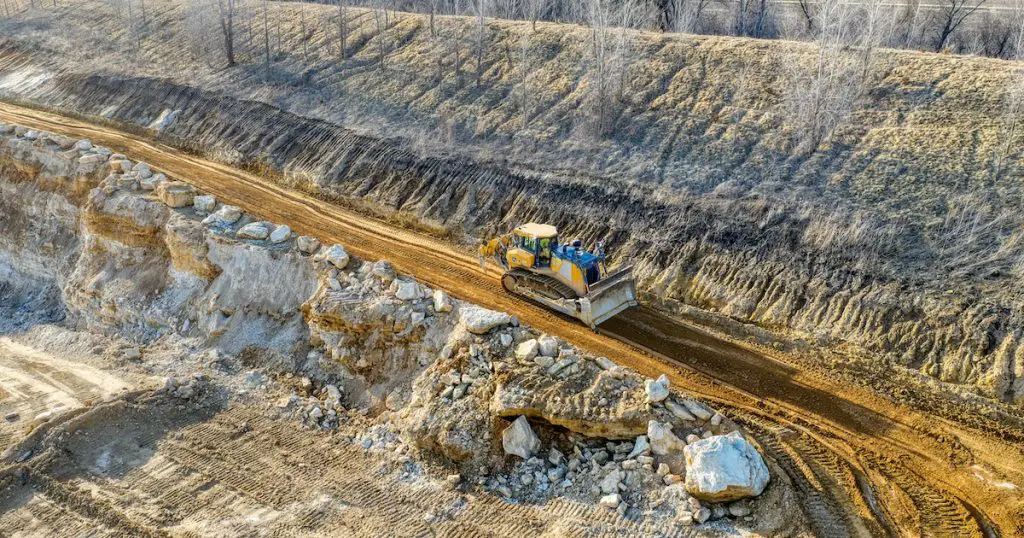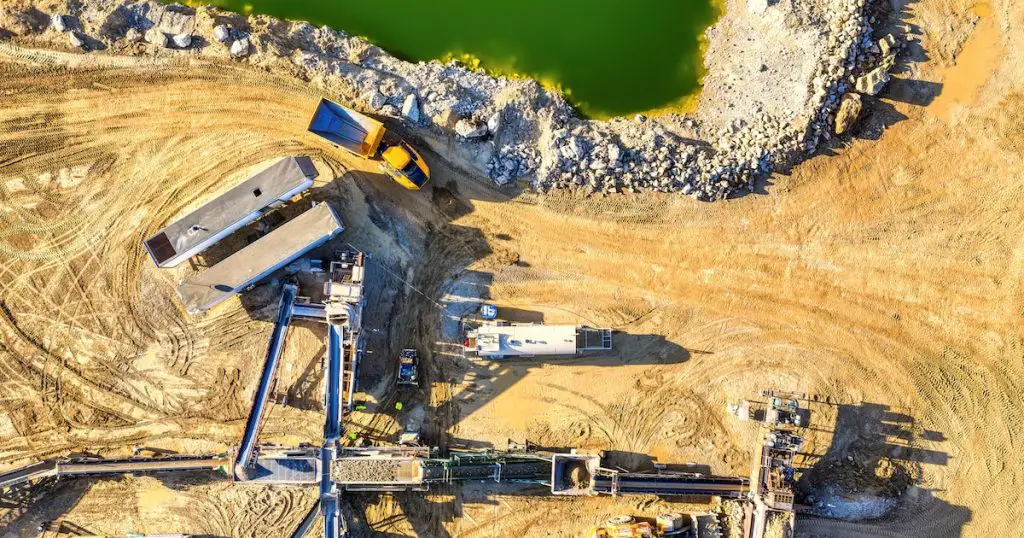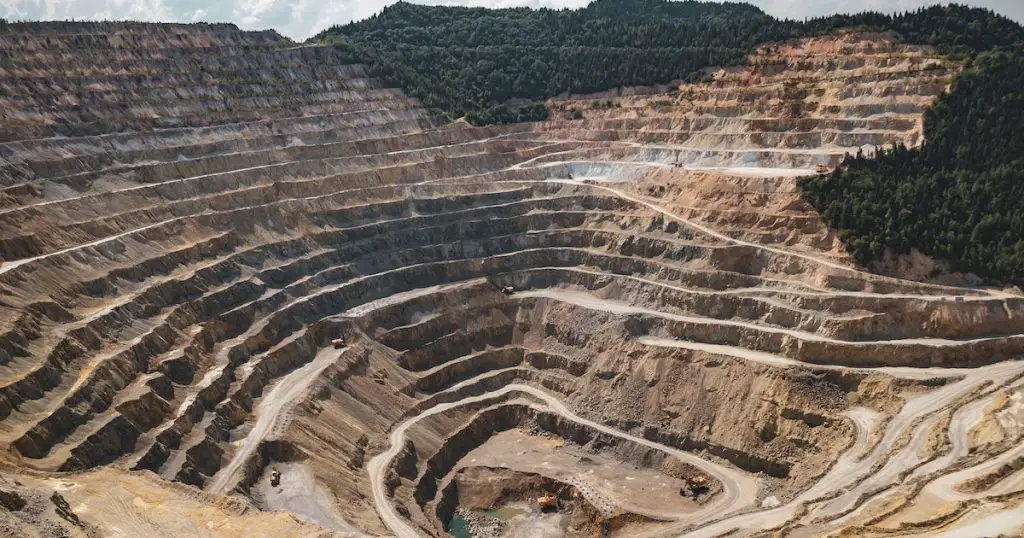Nestled in the heart of Arizona, Prescott’s allure extends beyond its scenic beauty and vibrant community. For many, it’s a testament to the intricate dance between man, ambition, and nature.

At the core of Prescott’s evolution lies a significant narrative: how mining shaped Prescott’s landscape. This tale of grit and grind unveils the profound transformation Prescott underwent, underpinned by its rich mining heritage.
Historical Context: The Advent of Mining
Prescott’s vibrant tapestry of history is colored with golden threads of mining stories. Its tryst with mining isn’t just a footnote but a central chapter in its evolution.
In the mid-1800s, the allure of hidden treasures beckoned prospectors to this part of Arizona. Their dreams, hopes, and ambitions led to the inception of mining operations that would forever change Prescott’s identity. The region, previously untouched by industrialization, soon reverberated with the sounds of picks and shovels.
These early settlers, driven by the promise of riches, established mining communities that dotted the landscape. Over time, these communities grew, fostering a sense of camaraderie and shared purpose among miners. Their shared vision not only extracted minerals from the ground but also paved the way for a flourishing township.
The Key Minerals: Foundations of Prescott’s Wealth
Every mine has a story, and in Prescott, it was primarily one of gold, silver, and copper.
Gold, with its luminous sheen and symbolic significance, was the prime driver of the mining surge. The rush began in the 1860s, forever embedding gold’s significance in Prescott’s legacy. Gold’s historical significance in Arizona reveals how pivotal these finds were, not just for the miners but for the entire state’s economy.
Silver, although often in gold’s shadow, played a vital role too. Its extraction contributed significantly to the wealth of the region, transforming the economic dynamics of Prescott. The Silver boom in the 19th century showcases its undeniable contribution.
Meanwhile, copper, the unsung hero, quietly laid the foundation for sustained mining operations. Although less glamorous than gold or silver, copper’s utility in various industries ensured its consistent demand. This red metal brought stability to the otherwise volatile world of precious metal mining.
Mining Techniques and Their Impacts
The methods adopted for mining shaped not only the landscape but also influenced the region’s socio-economic fabric.
Placer mining, for instance, involves sifting through riverbeds and streams. As miners eagerly scoured water bodies for nuggets, the terrain transformed. These practices affected natural water flow, leading to erosions and other environmental repercussions.
Hard rock mining, on the other hand, meant delving deep into the earth. This technique birthed extensive tunnel systems and vast open pits, altering Prescott’s topography dramatically. With it came the promise of larger yields, but also the challenge of managing waste and ensuring worker safety.

Open-pit mining, a method often criticized for its stark environmental impact, became prevalent in areas with shallow ore deposits. The visible scars on the landscape were a testament to this method’s expansive reach.
Infrastructure Developments
With mining came the need for efficient infrastructure. The landscape was further molded by the intricate network of transport and support systems.
Railroads crisscrossed the region, transforming Prescott from a remote settlement to a bustling hub. These networks facilitated the movement of ores, machinery, and miners. With tracks cutting through valleys and over hills, the railway’s role was indispensable in shaping the region.
Water, vital for mining processes, became a focal point of infrastructural developments. Reservoirs and dams were constructed to meet the growing needs of the industry, creating artificial lakes and altering river courses.
The rise of mining towns, such as Jerome and Crown King, showcased the urban transformation driven by mining. These towns became microcosms of Prescott’s larger story, thriving with a blend of cultures, traditions, and aspirations.
Environmental Impacts
The pursuit of wealth came at a significant environmental cost. Erosion, one of the most pronounced effects, altered hill slopes and riverbeds. This led to unpredictable water flow patterns, sometimes resulting in flash floods.
The release of toxins, a byproduct of certain mining processes, compromised water quality. Over time, these pollutants accumulated, posing threats to both aquatic life and human health. Efforts like the Clean Water Act tried to curb such pollutants, but the impact was already deep-seated.
Flora and fauna too bore the brunt. Habitats were destroyed, migration patterns interrupted, and several species faced the threat of extinction.
The Human Footprint
Mining didn’t just shape the land; it molded lives. Workers, drawn from various parts of the country, brought diverse cultures to Prescott. However, their settlements often lacked basic amenities. Many lived in cramped quarters, facing daily challenges that went beyond just extracting minerals.
Culturally, Prescott became a melting pot. Miners and their families introduced new festivities, culinary flavors, and traditions, enriching the local ethos.
Despite the community spirit, miners couldn’t escape the health hazards associated with their profession. Respiratory issues, physical injuries, and exposure to harmful chemicals were commonplace.

Economic Ramifications
Mining transformed Prescott from a quiet settlement to an economic powerhouse. Wealth generation was rapid during boom periods, but this came with the peril of economic instability. Bust cycles, characterized by plummeting mineral prices or depleted mines, brought financial hardships.
Over the decades, Prescott learned to diversify. While mining remained a significant contributor, the town branched out into other sectors, ensuring more economic stability.
Legacy and Preservation
Prescott’s mining legacy is etched in its landscape, culture, and collective memory. Abandoned mines and ghost towns stand as silent witnesses to a bygone era. While some are cautionary tales of nature’s fury, others serve as popular tourist destinations, offering glimpses into the past.
Preservation efforts have been pivotal. Several initiatives, like the Prescott’s Mining Heritage Center, ensure that the tales of yore are not forgotten, educating newer generations about the sacrifices and triumphs of their ancestors.
Modern-Day Perspective
Today, Prescott strikes a delicate balance between cherishing its past and forging ahead.
While the days of intensive mining are behind, its imprints remain, reminding the locals of their roots. New-age explorations, now driven by sustainable practices, reflect a more environmentally conscious ethos.

Frequently Asked Questions:
In this section, we will be delving into some of the most common inquiries and curiosities that surround our topic.
When did mining first begin in Prescott?
Mining in Prescott began in earnest during the mid-1800s, driven by the discovery of gold.
Are there still active mines in Prescott today?
While the heyday of mining has passed, there are smaller mining operations and explorations in and around Prescott. However, these are not as intensive as in the past, and many are driven by sustainable and environmentally conscious practices.
What measures have been taken to mitigate environmental damage from past mining activities?
Over the years, various measures have been implemented. These include reforestation projects, water treatment initiatives to cleanse polluted water sources, and rehabilitation of affected habitats. Efforts like the Clean Water Act have also played a role in ensuring that future mining practices reduce environmental impact.
How can visitors explore and understand Prescott’s mining history today?
Visitors can delve into Prescott’s rich mining legacy through several avenues. The Prescott’s Mining Heritage Center offers insightful exhibits. Guided tours to old mining sites, ghost towns, and rejuvenated mining communities provide firsthand experiences. Additionally, several local festivals and events celebrate the town’s mining past, offering interactive sessions and historical reenactments.
Summary: Reflecting on the Inextricable Link
The tale of Prescott and its mining legacy is one of ambition, resilience, and evolution. As the landscape transformed, so did the lives of its inhabitants, intertwining their destinies with the very minerals they extracted.
Today, as Prescott stands as a testament to its storied past, it also shines as a beacon of adaptability and sustainable progress. The mines may have been the catalyst, but it’s the spirit of Prescott that has truly shaped its legacy.



Leave a Comment
You must be logged in to post a comment.